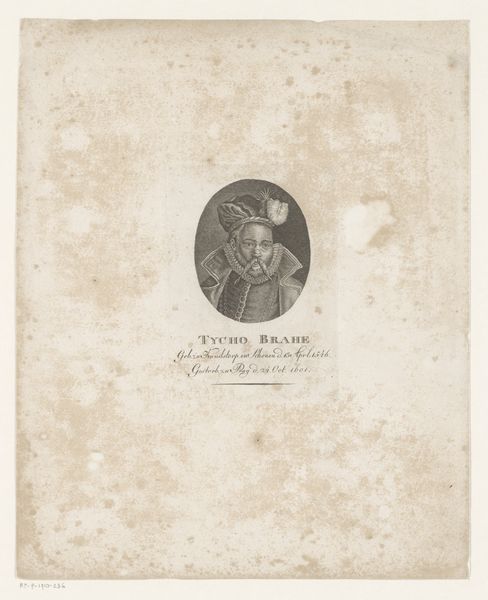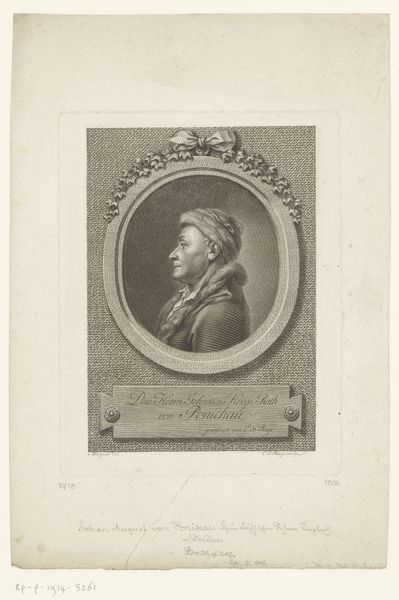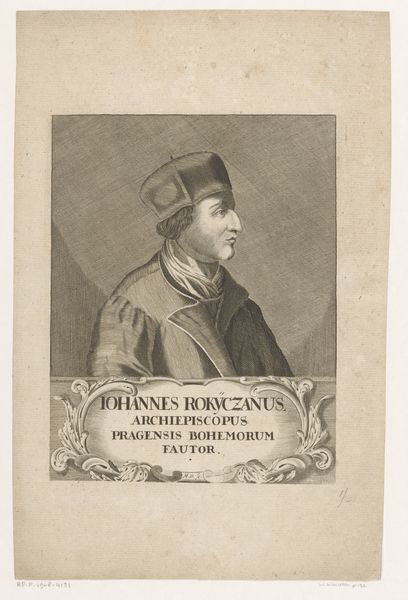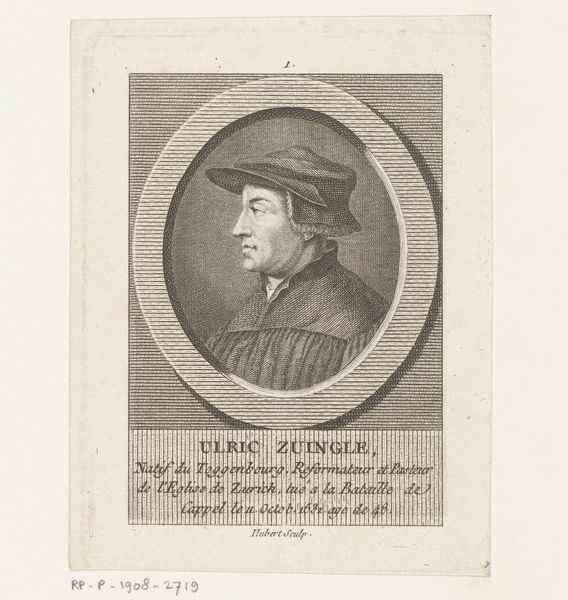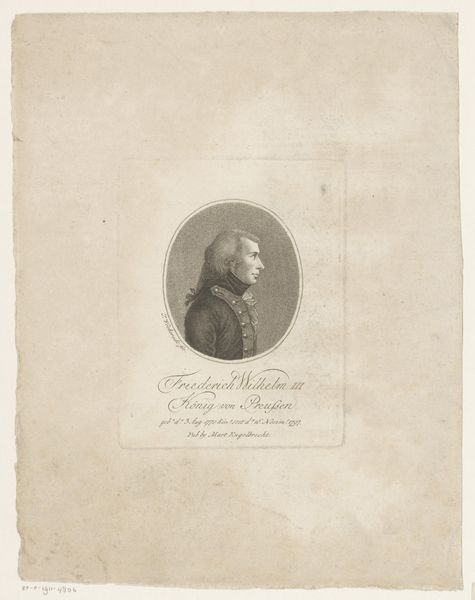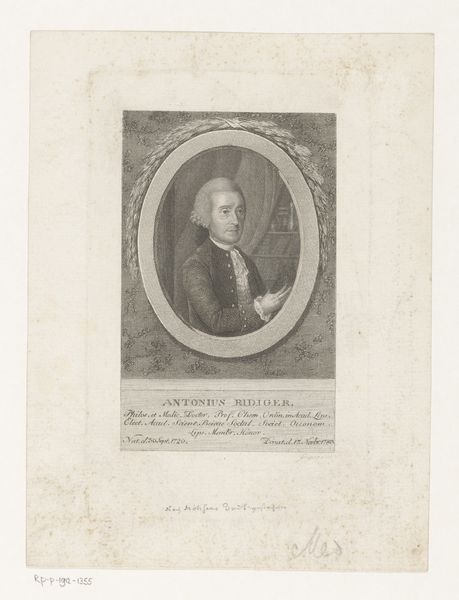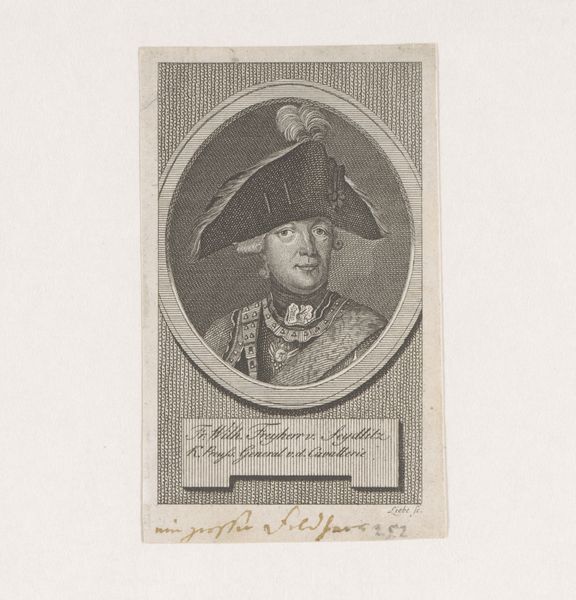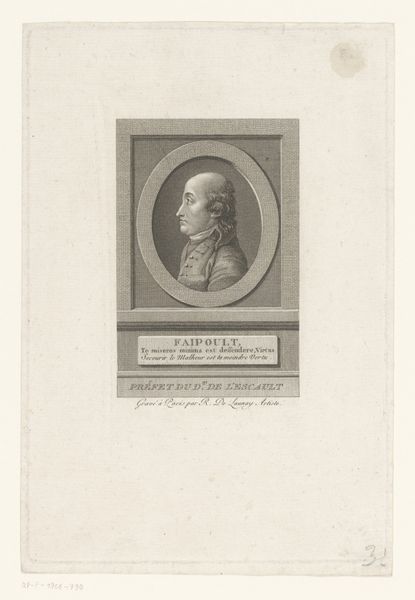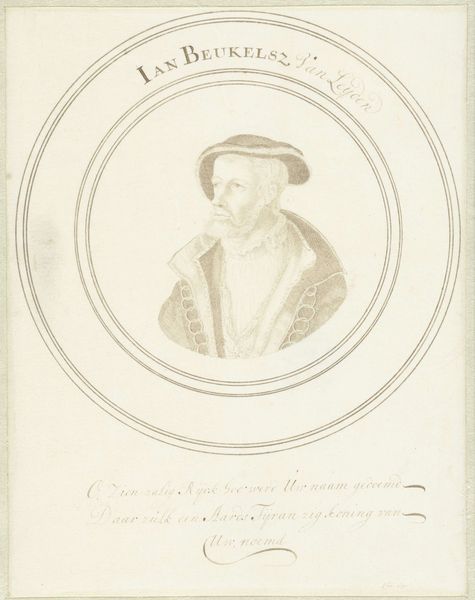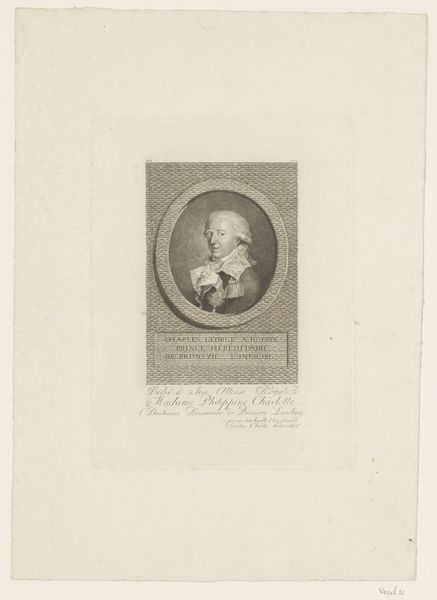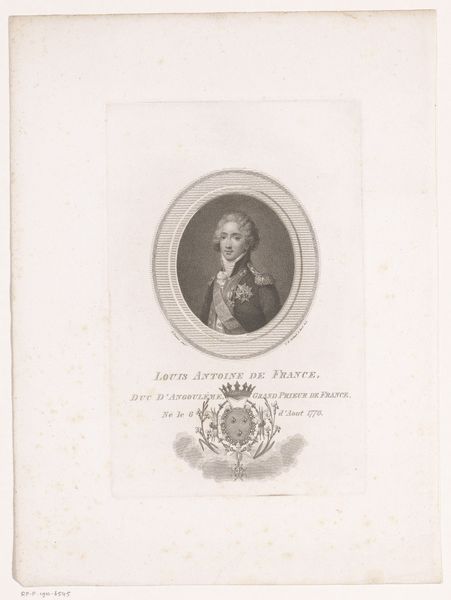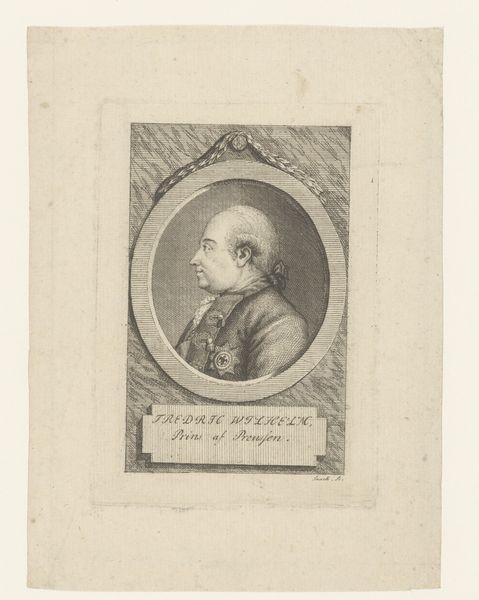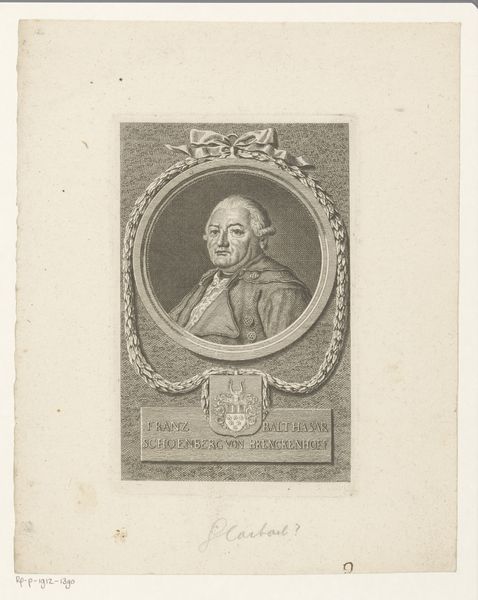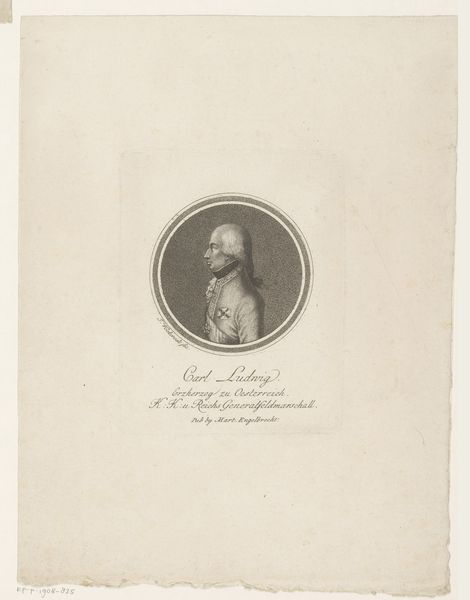
print, engraving
#
portrait
#
neoclacissism
# print
#
old engraving style
#
engraving
Dimensions: height 157 mm, width 103 mm
Copyright: Rijks Museum: Open Domain
This print of Guillaume-Marie-Anne Brune was made by Theodor Vincenz Poll, using a technique called etching. In etching, a metal plate is coated with a waxy ground, into which the artist scratches an image. The plate is then bathed in acid, which bites into the metal where the ground has been removed, creating incised lines. Ink is applied to these lines, and the plate is pressed onto paper. The resulting image is characterized by its fine, precise details. But look closely, and you’ll see that the image also speaks of labor, politics, and consumption. The fact that this print was made and sold, is a testament to the growing commercialization of art in the 18th and 19th centuries. It suggests that even portraits of military figures like Brune were being mass-produced and consumed as commodities. Etching allowed artists to create multiples, meeting the demands of a burgeoning market. Ultimately, understanding the materials, making, and context of an artwork allows us to grasp its full meaning, challenging traditional distinctions between fine art and craft.
Comments
No comments
Be the first to comment and join the conversation on the ultimate creative platform.
